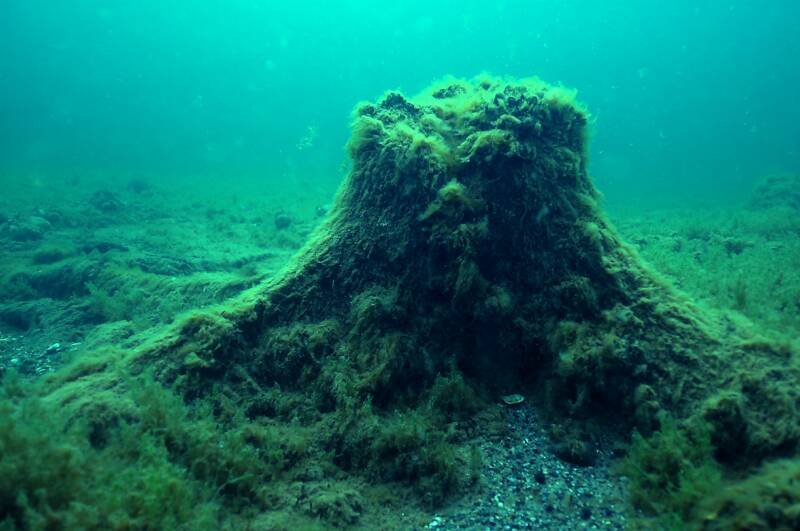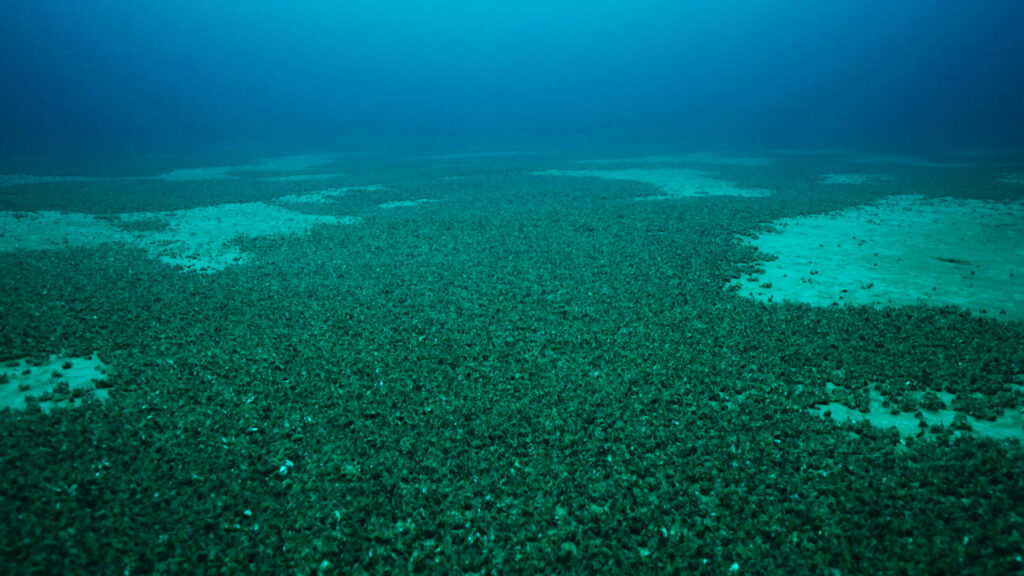We are all enamored of the 38,000 square miles of Great Lakes water within the boundaries of Michigan, but few think of the 38,000 square miles of land at the bottom of the Great Lakes. This area, which the State of Michigan is legally required to protect under the public trust doctrine and the Great Lakes Submerged Lands Act, contains many wonders – and likely more that are as yet undiscovered.
In scale alone, the lakebed under Michigan’s boundaries is impressive. Michigan has more land at the bottom of the Great Lakes than the total land area of each of 12 other U.S. states. All of it belongs to the people – the lakebed and water of the Great Lakes are essentially a giant public park.

Remnant of an ancient forest near Thunder Bay in Lake Huron. This and other trees remaining date back more than 7,000 years.
Eighty-five percent of the undiscovered country at the bottom of the Great Lakes has not been mapped to modern standards, according to the nonprofit organization Great Lakes Observing System (GLOS.) Many maps of the Great Lakes are created using data that is sometimes decades old and low-density.
To remedy this, two Michigan members of Congress, Lisa McClain (R-Bruce Twp.) and Debbie Dingell (D-Dearborn), have introduced the Great Lakes Mapping Act. “Advanced mapping will give us a deeper understanding of how we can tap into and protect one of America’s most valuable natural resources,” McClain said.
The bipartisan legislation directs the National Oceanic and Atmospheric Administration (NOAA) to conduct high-resolution mapping of the Great Lakes to understand the underwater environment. The bill would require NOAA to complete the mapping project by 2030, and make the information publicly available.
What is there to discover on the lakebed? More than boulders and shipwrecks, although these are both important.
- Archaeological evidence of long-ago human activity. About 9,000 years ago, lower water levels exposed a ridge that now runs underwater from the Alpena area to Ontario. Stone structures, artifacts, and ancient environmental materials have been found on the ridge.
- Ancient, drowned forests. These grew during a similar era of low water and are often preserved in remarkably good condition.
- Geological curiosities, like the 100-foot tall Mackinac Falls that are now submerged in deep water, and sinkholes in Lake Huron that are inspiring new hypotheses about the rise in oxygen levels that paved the way for life on our planet.
There are also important artifacts of recent human history, including the shipwrecks and planes lost during military training in the Great Lakes.
Unfortunately, invasive quagga mussels have colonized much of the lakebed of several Great Lakes. This may impede the study of many lakebed features.

Quagga mussels have colonized the depths of several Great Lakes.